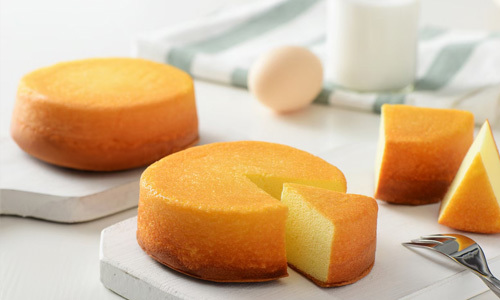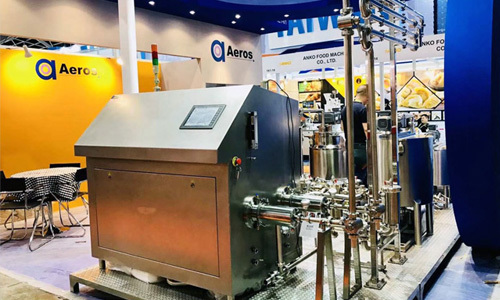The Comprehensive Guide to Marshmallow Production Systems in Food Processing

2024/10/23
Marshmallows are beloved treats, cherished for their soft, fluffy texture and sweet flavor. The production of marshmallows involves a complex system that integrates various stages and specialized machinery designed to ensure high-quality output. Understanding the marshmallow production system is crucial for any manufacturer in the food processing industry.
The marshmallow production system typically begins with the preparation of the main ingredients: sugar, corn syrup, gelatin, and water. These ingredients are carefully measured and combined in large mixing tanks. Here, the temperature is controlled to dissolve the sugar and activate the gelatin, which provides the characteristic texture of marshmallows. The right temperature and timing are crucial; overheating can cause undesirable changes in texture and flavor.
Once the mixture reaches the desired consistency, it is whipped with air. This is where the magic happens; the incorporation of air creates the light and fluffy texture that marshmallows are known for. High-capacity mixers are used during this stage, which must be designed to handle the viscous nature of the marshmallow mixture while ensuring even aeration.
After whipping, the marshmallow mixture is transferred to a depositing machine. This machine shapes the marshmallows into desired forms, whether they are classic cubes or unique shapes for seasonal products. Precision is key at this stage, as uniformity in size and shape impacts the final product's appeal and marketability.
The next step in the marshmallow production system is cooling. The shaped marshmallows are placed on cooling conveyors or in cooling tunnels, where they are allowed to set and achieve the right texture. Maintaining a controlled cooling environment is vital to prevent the marshmallows from becoming sticky or losing their structure.
Once cooled, the marshmallows undergo a dusting process to prevent sticking. This often involves coating them with a mixture of cornstarch and powdered sugar. Finally, the marshmallows are packaged using automated packing machines, ready to be distributed to retailers and consumers.
In addition to traditional marshmallow production, modern systems offer customization options such as flavoring and coloring. These enhancements can cater to market trends and consumer preferences. Quality control is also paramount throughout the entire production process, ensuring that each batch meets safety and quality standards.
In conclusion, the marshmallow production system is a fascinating fusion of science and art. Understanding the intricacies of this system can empower manufacturers to optimize their processes, enhance product quality, and meet consumer demands effectively. Whether you are involved in the food processing industry or simply have a passion for marshmallows, appreciating the production system can deepen your understanding of this popular confection.
The marshmallow production system typically begins with the preparation of the main ingredients: sugar, corn syrup, gelatin, and water. These ingredients are carefully measured and combined in large mixing tanks. Here, the temperature is controlled to dissolve the sugar and activate the gelatin, which provides the characteristic texture of marshmallows. The right temperature and timing are crucial; overheating can cause undesirable changes in texture and flavor.
Once the mixture reaches the desired consistency, it is whipped with air. This is where the magic happens; the incorporation of air creates the light and fluffy texture that marshmallows are known for. High-capacity mixers are used during this stage, which must be designed to handle the viscous nature of the marshmallow mixture while ensuring even aeration.
After whipping, the marshmallow mixture is transferred to a depositing machine. This machine shapes the marshmallows into desired forms, whether they are classic cubes or unique shapes for seasonal products. Precision is key at this stage, as uniformity in size and shape impacts the final product's appeal and marketability.
The next step in the marshmallow production system is cooling. The shaped marshmallows are placed on cooling conveyors or in cooling tunnels, where they are allowed to set and achieve the right texture. Maintaining a controlled cooling environment is vital to prevent the marshmallows from becoming sticky or losing their structure.
Once cooled, the marshmallows undergo a dusting process to prevent sticking. This often involves coating them with a mixture of cornstarch and powdered sugar. Finally, the marshmallows are packaged using automated packing machines, ready to be distributed to retailers and consumers.
In addition to traditional marshmallow production, modern systems offer customization options such as flavoring and coloring. These enhancements can cater to market trends and consumer preferences. Quality control is also paramount throughout the entire production process, ensuring that each batch meets safety and quality standards.
In conclusion, the marshmallow production system is a fascinating fusion of science and art. Understanding the intricacies of this system can empower manufacturers to optimize their processes, enhance product quality, and meet consumer demands effectively. Whether you are involved in the food processing industry or simply have a passion for marshmallows, appreciating the production system can deepen your understanding of this popular confection.
Marshmallow production system







